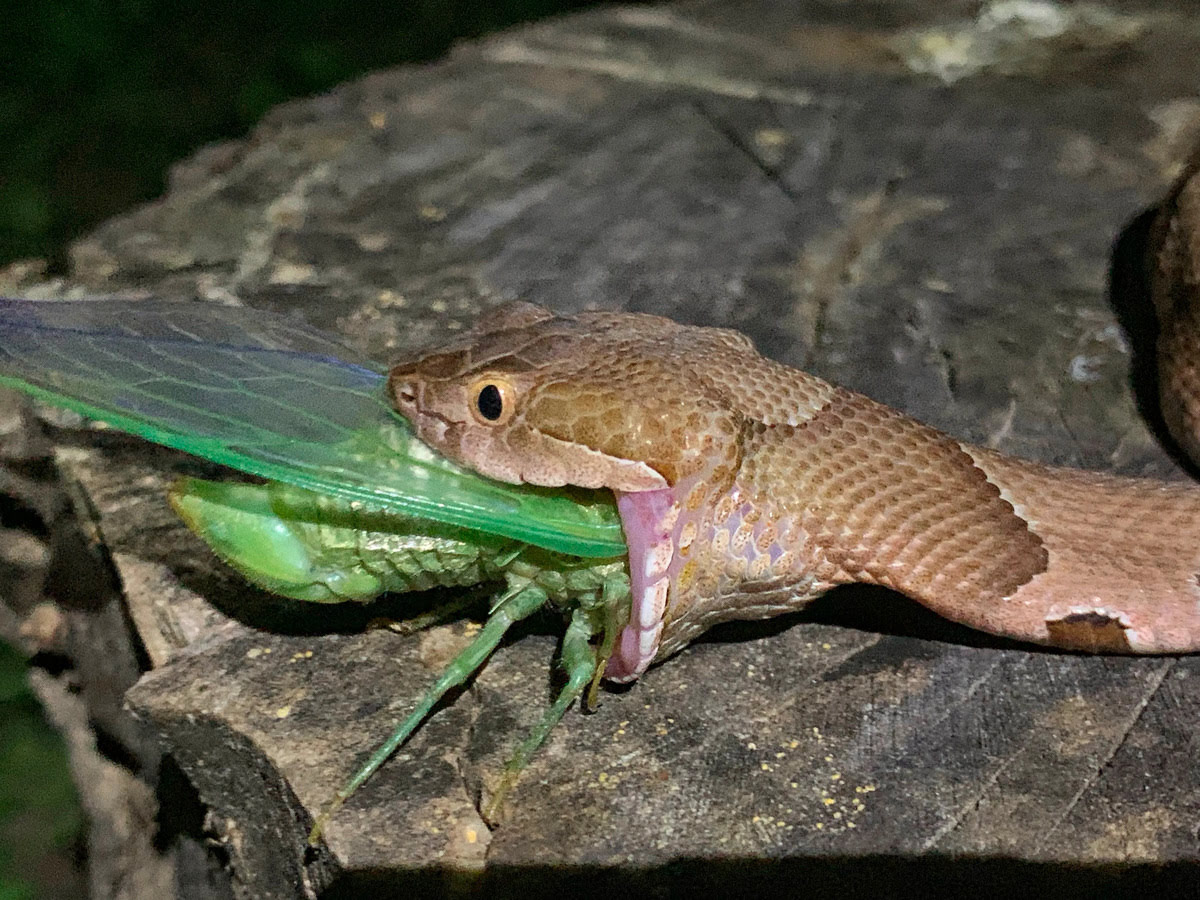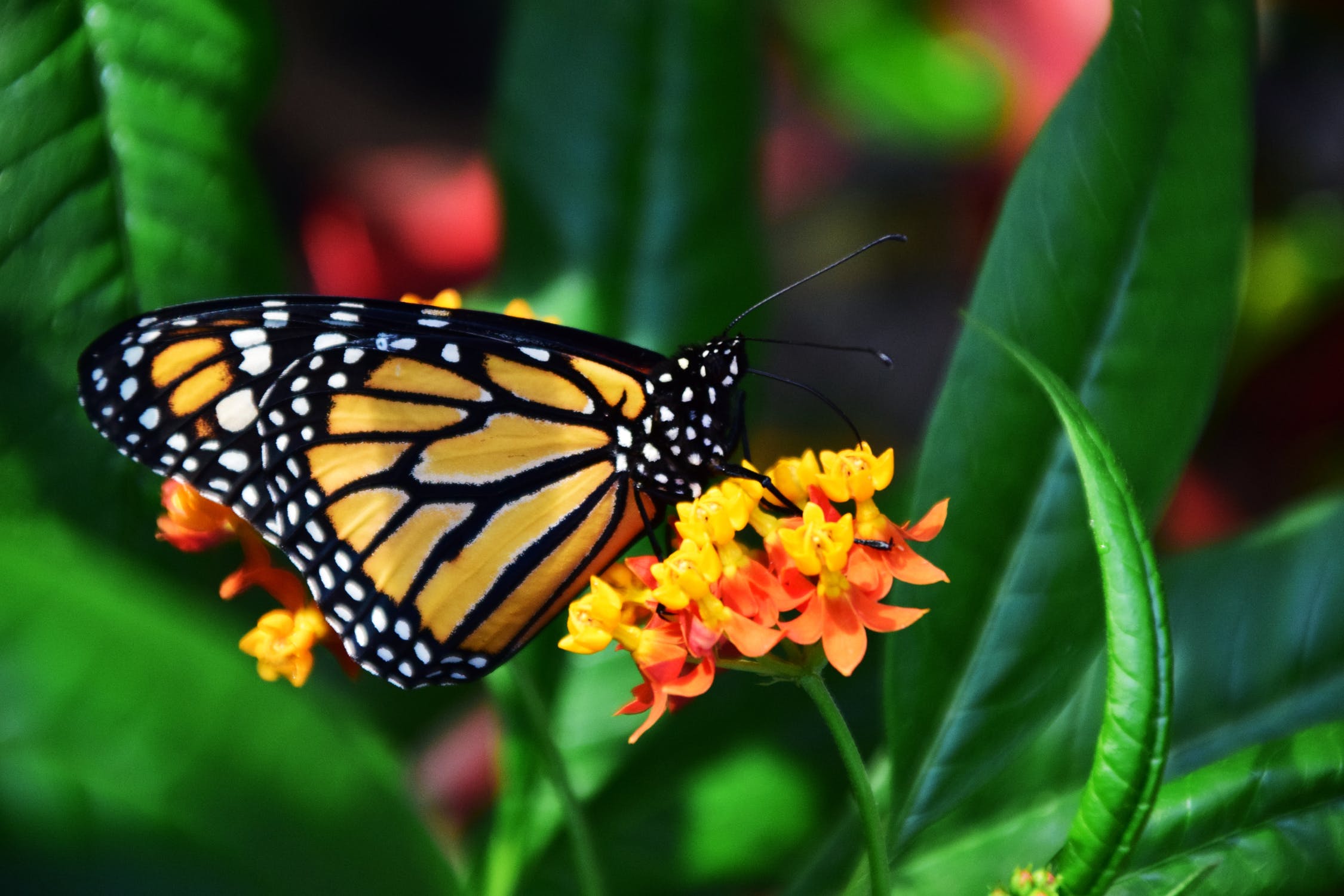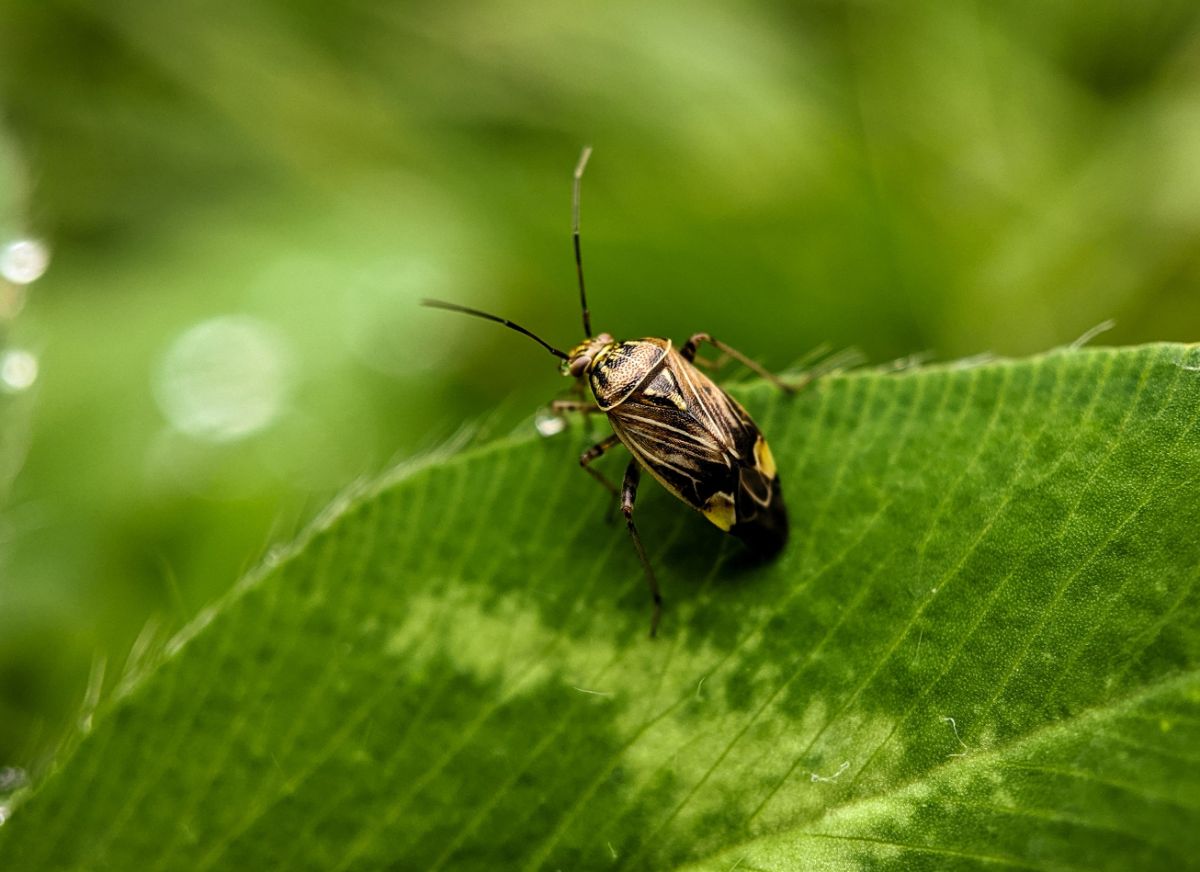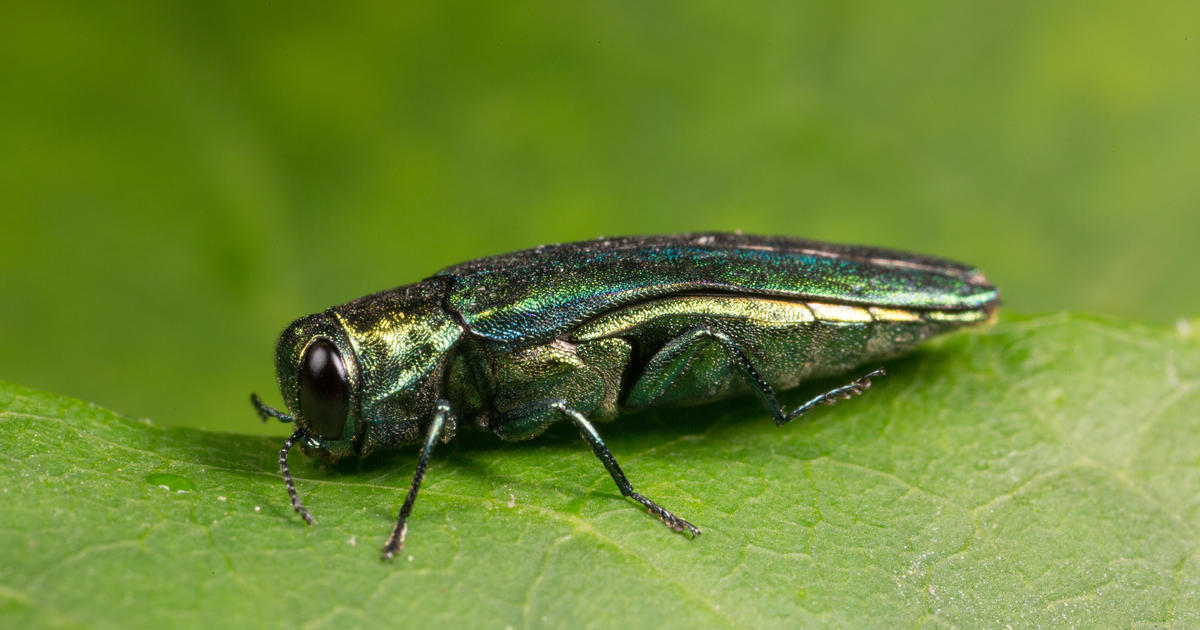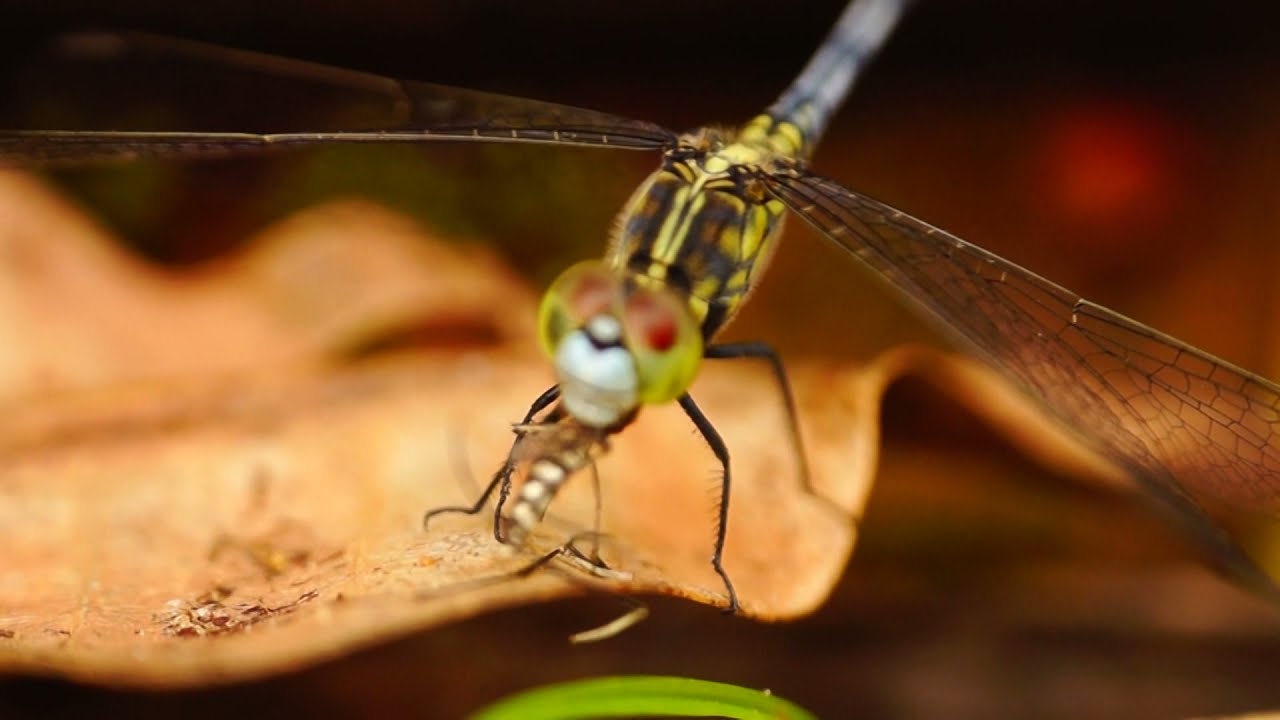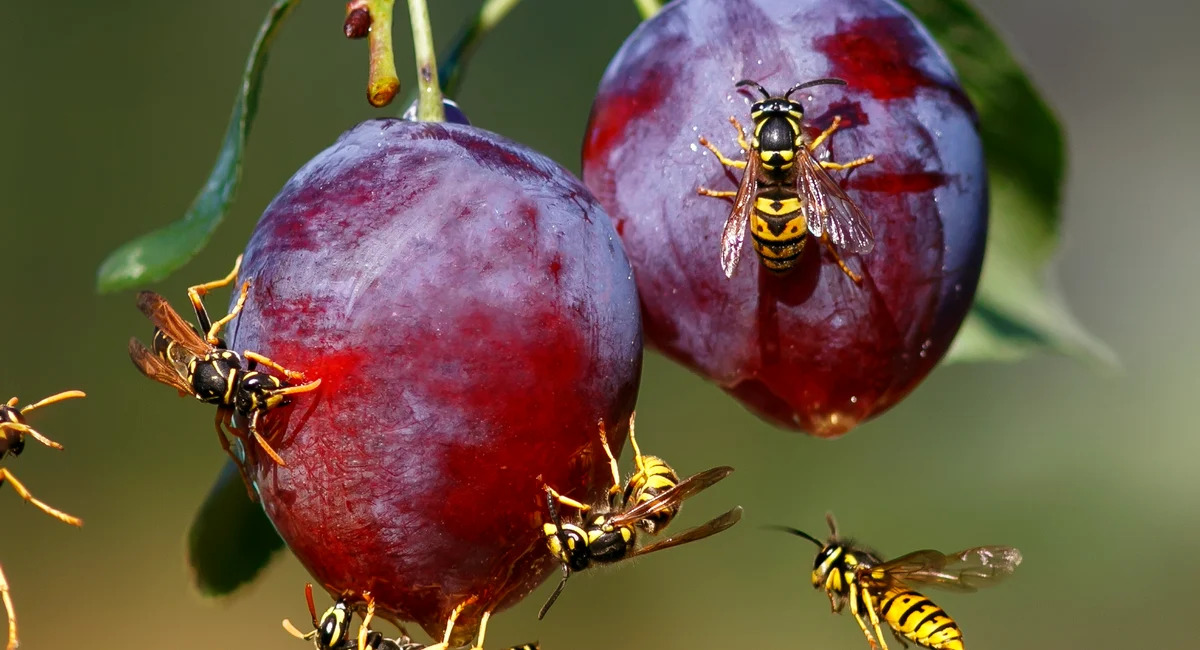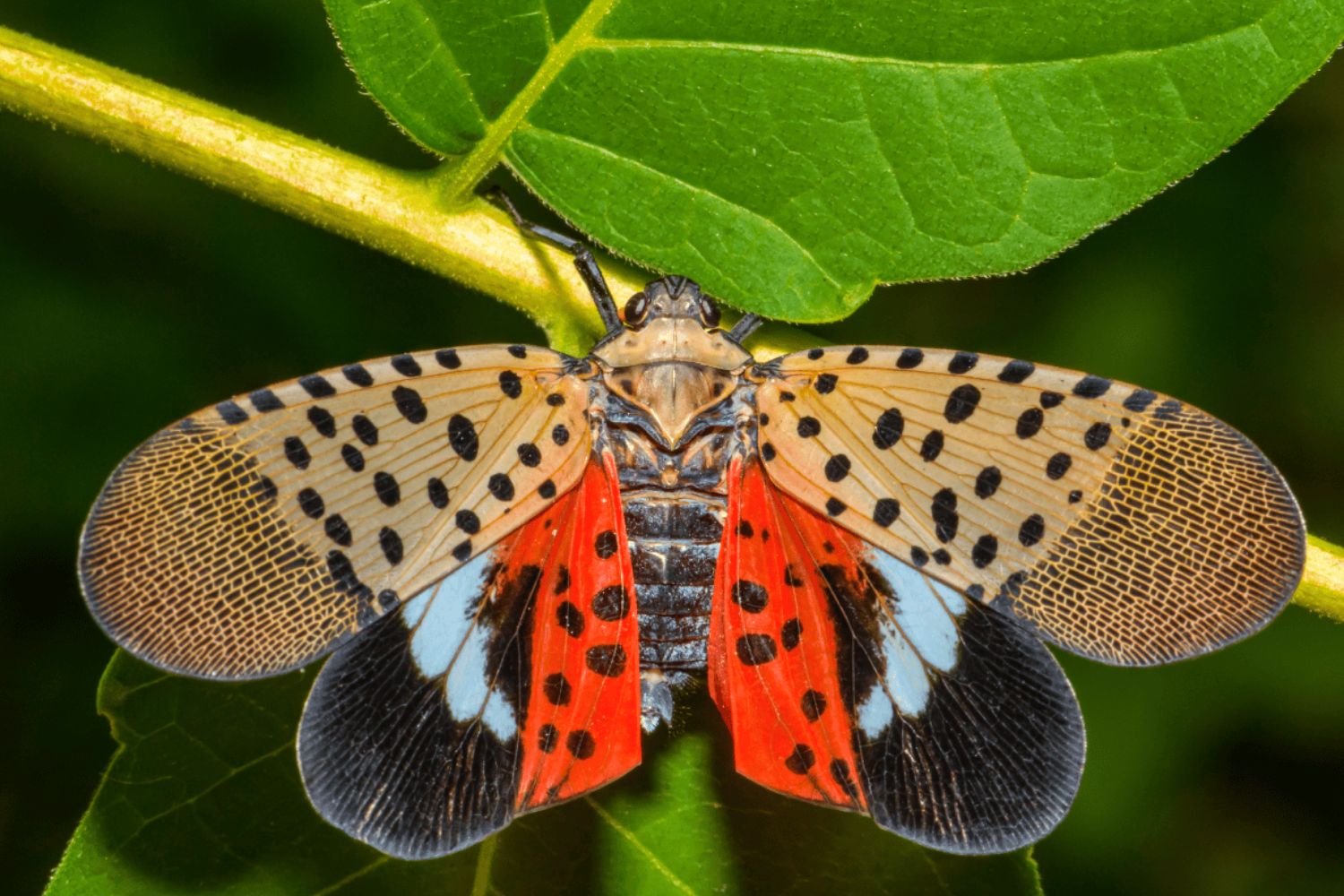Home>Gardening News and Trends>Latest News>What Insects Eat Plants
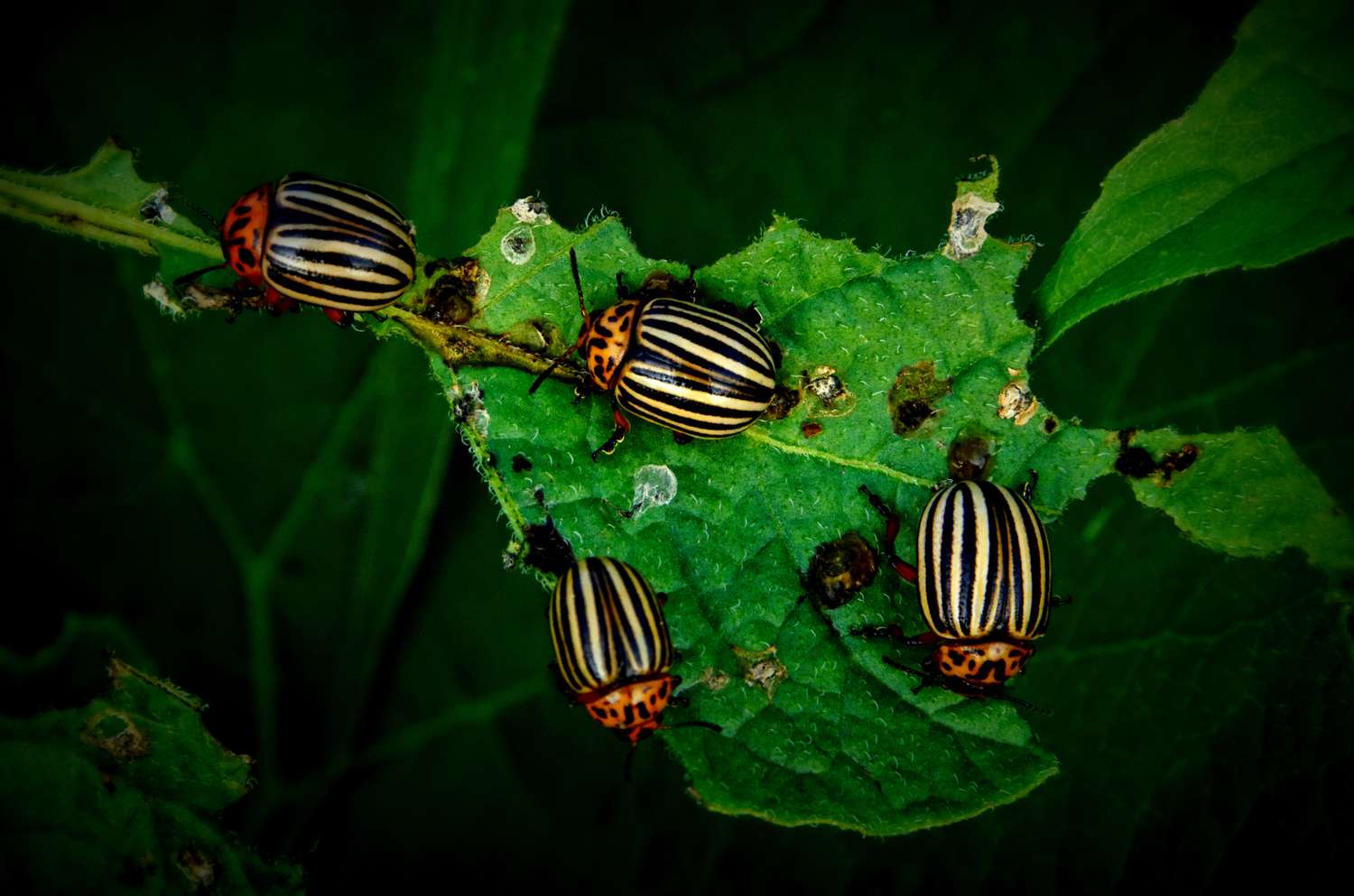

Latest News
What Insects Eat Plants
Modified: January 22, 2024
Discover the latest news on what insects eat plants and how it impacts ecosystems. Stay informed and explore the fascinating world of insect-plant interactions.
(Many of the links in this article redirect to a specific reviewed product. Your purchase of these products through affiliate links helps to generate commission for Chicagolandgardening.com, at no extra cost. Learn more)
Table of Contents
- Introduction
- Importance of Understanding Insect-Plant Interactions
- Types of Insects that Feed on Plants
- Mechanisms of Plant Damage by Insects
- Common Plant Defenses Against Insect Herbivory
- Insect Adaptations for Feeding on Plants
- Impact of Insects on Plant Health and Productivity
- Ecological and Economic Implications of Insect-Plant Interactions
- Future Research Directions in Insect-Plant Interactions
- Conclusion
Introduction
In the intricate web of nature, plants and insects have an age-old relationship. While plants rely on insects for pollination, certain insects have a voracious appetite for plants, feeding on leaves, stems, and even roots. This interaction between insects and plants is known as insect-plant interactions, and it plays a crucial role in shaping ecosystems.
Understanding this complex relationship is of paramount importance in various fields, including agriculture, ecology, and conservation. By unraveling the intricacies of what insects eat, we can gain insights into plant defenses, insect adaptations, and the impact of these interactions on overall ecosystem dynamics.
Within the realm of insect-plant interactions, there is great diversity. Various types of insects feed on plants, including herbivores, phytophagous insects, and even some predatory insects that supplement their diets with plant material. Each insect species has its own feeding preferences, targeting specific plant parts or even specific plant species.
The mechanisms of plant damage by insects are equally diverse. Some insects chew on leaves, consuming large portions of plant tissue, while others suck plant sap from the vascular system. Some insects even bore into plant tissues, causing internal damage. The severity and type of plant damage depend on the specific insect feeding habit and the plant’s response to these attack strategies.
Remarkably, plants have developed a range of defense mechanisms to withstand insect herbivory. These defenses can include physical barriers, such as thorns or tough leaf structures, or chemical defenses, such as toxic compounds or insect-repelling substances. Some plants even enlist the help of beneficial insects or emit volatile compounds to attract predators that feed on herbivorous insects.
On the flip side, insects have evolved various adaptations to successfully feed on plants. Some insects have developed specialized mouthparts, such as piercing-sucking mouthparts or chewing mouthparts, to access plant tissues. Others have symbiotic relationships with microorganisms that help digest complex plant compounds.
The impact of insect-plant interactions goes beyond individual plants and insects. Insects can cause significant damage to agricultural crops, leading to reduced yields and economic losses for farmers. Some insects can also serve as vectors for plant diseases, further exacerbating the negative impacts on plant health.
Moreover, understanding insect-plant interactions can shed light on broader ecological processes. For instance, certain insects can shape plant community dynamics, influencing species composition and abundance. These interactions can ripple through the food web, impacting other organisms that rely on plants or insects for their survival.
Given the vast complexity and importance of insect-plant interactions, ongoing research in this field is essential. Future studies can explore the underlying mechanisms driving these interactions, such as the chemical signaling between plants and insects or the role of genetic factors in plant resistance. Such knowledge will not only deepen our understanding of the natural world but also inform pest management strategies and promote sustainable agriculture practices.
Importance of Understanding Insect-Plant Interactions
The intricate dance between insects and plants is of utmost importance for numerous reasons. From a scientific standpoint, unraveling the complexities of insect-plant interactions provides invaluable insights into the fundamental processes that shape ecosystems. Additionally, understanding these interactions has practical implications for agriculture, conservation, and pest management.
Firstly, studying insect-plant interactions helps us comprehend the delicate balance of nature. By investigating which insects feed on which plants and the mechanisms they employ, we gain a deeper understanding of the intricate web of life. This knowledge contributes to our understanding of biodiversity, species interactions, and ecosystem dynamics. It allows us to appreciate the coevolutionary arms race between plants and insects, as well as the importance of maintaining a diverse range of plant-insect associations.
Furthermore, understanding insect-plant interactions has significant implications for agriculture. Insect herbivory can impose heavy economic losses on crop production. By identifying the specific insect pests and the plants they target, farmers and agricultural scientists can develop targeted pest control strategies. This knowledge can lead to the development of more sustainable and eco-friendly approaches, reducing the reliance on harsh chemical pesticides and minimizing the environmental impact associated with pest management.
In addition to crop protection, understanding insect-plant interactions is crucial for promoting effective pollination. Many plants depend on insects for pollination, and the close relationship between plants and their pollinators is essential for ensuring successful reproduction. By studying the specific insects that serve as pollinators for different plant species, conservation efforts can be directed towards preserving these important interactions, safeguarding both plants and pollinators.
Moreover, exploring insect-plant interactions can aid in the development of innovative technologies for pest management. By uncovering the chemical signals that plants release to communicate with insects, researchers can potentially manipulate these signals to disrupt insect feeding behaviors or attract natural enemies of pests. This field of study, known as chemical ecology, holds great promise for developing sustainable pest management strategies that minimize the use of synthetic pesticides and maximize the use of natural pest control mechanisms.
Understanding insect-plant interactions also highlights the interconnectedness of species within an ecosystem. Insect-plant interactions can have cascading effects on other organisms that rely on plants or insects. By studying these interactions, we gain insights into larger ecological processes, such as the impact of insect herbivory on plant communities, the role of insects as prey for higher trophic levels, and the potential consequences of disrupting these delicate relationships.
In summary, understanding insect-plant interactions is vital for both scientific exploration and practical applications. It allows us to delve into the intricate webs of nature and gain insights into the mechanisms shaping ecosystems. From an agricultural standpoint, this knowledge enables us to develop more sustainable and effective pest management strategies. By appreciating the significance of these interactions, we can make informed decisions to preserve biodiversity and promote the coexistence of plants and insects in a rapidly changing world.
Types of Insects that Feed on Plants
In the vast world of insects, there is a diverse array of species that rely on plants as a food source. These insects can be categorized into several groups based on their feeding habits and the plant parts they consume.
One common group of insects that feed on plants is herbivores. These insects consume various parts of plants, including leaves, stems, and roots. Examples of herbivorous insects include caterpillars, grasshoppers, and aphids. Caterpillars, for instance, have strong mandibles that allow them to chew on plant foliage, while aphids use their piercing-sucking mouthparts to extract sap from plant stems and leaves.
Another group of insects that specialize in feeding on plants is phytophagous insects. Phytophagous insects have evolved to rely exclusively on plants for their nutrition. They have developed adaptations, such as specialized mouthparts or digestive enzymes, to process and extract nutrients from plant tissues. Leaf mining insects, for example, lay their eggs on the underside of leaves, and the larvae feed on the internal tissues of the leaf, creating distinctive tunnels or mines.
Some predatory insects also supplement their diet with plant material. These insects primarily feed on other insects but consume plant pollen, nectar, or extrafloral nectar as a supplementary food source. Ladybugs, for instance, are well-known predators of aphids but can also consume pollen and nectar from flowers.
Within these broad categories, specific insect species may exhibit niche feeding behaviors. Some insects are highly specialized, feeding on a specific plant or plant family. The monarch butterfly, for example, relies solely on milkweed plants for its survival, as the caterpillars feed exclusively on milkweed leaves. Other insects, such as the tomato hornworm, have a broader diet but prefer specific plant species.
Insect feeding preferences can also vary based on the plant parts they target. Some insects primarily consume leaves, causing defoliation and impairing plant growth. Others specialize in feeding on plant sap, weakening the plant and potentially transmitting plant diseases. Certain insects, such as root-feeding beetles, nibble on plant roots, which can lead to stunted growth or even plant death.
It is important to note that while many insects feed on plants, not all of them cause significant damage. Some insects have co-evolved with their host plants, with the plants developing resistance mechanisms to deter or limit the impact of herbivory. Additionally, natural enemies of herbivorous insects, such as predatory insects, parasites, or pathogens, help regulate insect populations and maintain ecological balance.
Understanding the different types of insects that feed on plants is crucial for pest management and conservation efforts. By identifying the specific insect pests and their feeding habits, researchers and farmers can develop targeted approaches to control populations and mitigate crop damage. This knowledge also aids in preserving the delicate balance of ecosystems by recognizing the importance of certain insect-plant associations and implementing measures to protect them.
Mechanisms of Plant Damage by Insects
Insects have evolved a variety of strategies to feed on plants, causing damage that can range from minor cosmetic injuries to severe harm that hampers plant growth and productivity. Understanding the mechanisms by which insects damage plants is crucial for developing effective pest management strategies and mitigating the impact on agricultural crops and natural ecosystems.
One common method of plant damage is chewing. Insects such as caterpillars, beetles, and grasshoppers have mandibles or chewing mouthparts that enable them to consume plant tissues. They may devour entire leaves, skeletonize foliage by eating the soft tissues between the veins, or create holes in leaves. Some chewing insects even feed on stems, resulting in weakened plant structures and reduced nutrient transport.
Another method of plant damage is the piercing-sucking feeding style. Insects such as aphids, scale insects, and leafhoppers have specialized mouthparts that allow them to pierce plant tissues and extract sap. As these insects feed, they damage the plant by removing vital nutrients and water. Moreover, their feeding can introduce toxins or pathogens into the plant, further compromising its health.
Boring is another mechanism of plant damage employed by certain insects. Wood-boring beetles, for example, lay their eggs on or inside trees, and the larvae tunnel through the wood as they feed, weakening the structural integrity of the tree. Similarly, stem-boring insects bore into the stems of herbaceous plants, potentially causing wilting or plant death.
Additionally, some insects cause damage by mining plant tissues. Leaf mining insects, such as certain moth larvae or fly maggots, feed on the internal layers of leaves, creating distinctive patterns or tunnels within the leaf. While this type of damage may not directly impact plant health, extensive mining can reduce the leaf’s photosynthetic ability and impair overall plant vigor.
Insects can also induce damage by transmitting plant diseases. Certain insects, like whiteflies or aphids, act as vectors of plant pathogens, carrying viruses or bacteria from plant to plant as they feed. This transmission of disease can cause devastating consequences, leading to stunted growth, deformities, or even death of infected plants.
It is worth noting that plants have developed a range of defense mechanisms to counteract insect damage. These defenses can include physical barriers, such as thorns or tough leaf structures, which deter or hinder insect feeding. Chemical defenses are also prevalent, with plants producing toxic compounds or bitter-tasting substances that repel or deter herbivorous insects. Some plants even emit volatile compounds that attract natural enemies of insects, effectively turning the tables on herbivory.
Understanding the mechanisms of plant damage by insects is crucial for effective pest management. By identifying the specific feeding habits and damage patterns associated with different insect pests, farmers and researchers can implement targeted control strategies. This may involve the use of insecticides, biological controls, or cultural practices like crop rotation or intercropping to minimize the impact of insect feeding on plants.
Moreover, delving into the mechanisms of plant damage provides valuable insights into the coevolutionary arms race between plants and insects. It sheds light on the intricate ways that plants have evolved to defend against herbivory and how insects have adapted to overcome these defenses. Such knowledge not only enhances our understanding of the natural world, but also informs sustainable agricultural practices and the conservation of plant diversity and ecosystem balance.
Common Plant Defenses Against Insect Herbivory
In the ongoing arms race between plants and herbivorous insects, plants have developed a range of defense mechanisms to protect themselves against insect feeding. These defenses can be classified into physical barriers and chemical defenses, both of which play important roles in diminishing the impact of herbivores on plant health and survival.
One common physical defense employed by plants is the presence of thorns, spines, or prickles. These structures act as deterrents, making it more difficult for herbivorous insects to access plant tissues. In addition to physical barriers, plants can have tough or leathery leaves, reducing their palatability and making them less appealing to insects. Such physical defenses can be found in various plant families, including cacti, roses, and nettle plants.
Another physical defense mechanism is the production of trichomes, which are hair-like structures found on the surfaces of plant parts. Trichomes can act as physical barriers, impeding insect movement and serving as a first line of defense. Some trichomes are glandular and produce sticky substances that can trap insects, making it difficult for them to continue feeding on the plant.
Chemical defenses are also prevalent among plants, with numerous species producing toxic compounds that deter or harm herbivorous insects. These compounds can be classified into two broad categories: secondary metabolites and allelochemicals.
Secondary metabolites are compounds produced by plants that are not directly involved in growth and development but play crucial roles in defense against herbivory. One well-known group of secondary metabolites is alkaloids, which have toxic effects on herbivorous insects. Nicotine, for example, is an alkaloid produced by tobacco plants that acts as a powerful insecticide.
Phenolic compounds are another group of secondary metabolites that have anti-herbivory properties. These compounds can inhibit herbivore digestion or disrupt their feeding behavior. Some plants produce phenolic compounds in response to herbivory, enhancing their defense capabilities. For instance, when caterpillars feed on certain plant species, the damaged leaves release volatile phenolic compounds that attract predatory insects to help control the herbivore population.
Allelochemicals are chemical substances released by plants that can influence the behavior or physiology of other organisms. These compounds can act as feeding deterrents, growth inhibitors, or even toxins. For example, glucosinolates found in plants like mustard and broccoli are toxic to many herbivorous insects, acting as a defense against feeding.
Furthermore, some plants produce volatile organic compounds (VOCs) in response to herbivory. These airborne chemicals can serve as a signaling mechanism, alerting neighboring plants to the presence of herbivores. In turn, neighboring plants may prime their own defense mechanisms, preparing to ward off potential attack.
Interestingly, plant defenses against insect herbivory can be dynamic and inducible. This means that plants may increase their production of defensive compounds when they detect the presence of herbivores or even just their feeding damage. This adaptive response allows plants to allocate resources to defenses as needed, conserving energy during periods of low herbivory.
Understanding the common plant defenses against insect herbivory is essential for developing effective pest management strategies and promoting sustainable agriculture practices. By recognizing the varied mechanisms at play, farmers and researchers can implement approaches that harness and enhance plant defenses, reducing reliance on chemical pesticides. This knowledge also contributes to our broader understanding of plant-insect interactions and the intricate ways in which organisms coexist and adapt in the natural world.
Insect Adaptations for Feeding on Plants
Insects have evolved a wide array of adaptations to enable them to successfully feed on plants. These adaptations allow insects to overcome plant defenses, access plant tissues, and extract nutrients efficiently. Understanding these adaptations is crucial for comprehending the mechanisms behind insect-plant interactions and the intricate coevolutionary dance between plants and herbivorous insects.
One key adaptation seen in herbivorous insects is their mouthparts. Different species have evolved specialized mouthparts that are suited for their specific feeding strategies. For instance, chewing insects, such as caterpillars and grasshoppers, possess strong mandibles that allow them to bite through plant material. Conversely, piercing-sucking insects, like aphids and leafhoppers, have modified mouthparts that enable them to puncture plant tissues and extract sap.
Herbivorous insects have also developed mechanisms to circumvent physical barriers on plants. For example, insects like leaf miners have specialized structures, such as flattened bodies or reduced appendages, which allow them to navigate through narrow tunnels within leaves. Some insects can also secrete enzymes or produce silk-like substances that help them manipulate plant tissues, making it easier for them to feed.
In addition to physical adaptations, herbivorous insects have evolved physiological traits that aid in their plant-based diet. Certain insects have developed symbiotic relationships with microorganisms that help break down and digest complex plant compounds. These symbiotic microbes, often found in the insect’s gut, produce enzymes that assist in the breakdown of cellulose, lignin, and other plant components that are challenging to digest.
Another remarkable adaptation seen in some herbivorous insects is detoxification mechanisms. Many plants produce toxic compounds as a defense against herbivory. However, certain insects have evolved mechanisms to either sequester these toxins or metabolize them into non-toxic forms. This adaptation allows them to feed on plants that are toxic to other organisms, giving them a competitive advantage.
Some herbivorous insects also possess extraordinary sensory abilities that help them locate suitable host plants. Insects can detect volatile organic compounds (VOCs) emitted by plants, enabling them to locate potential food sources. They can also detect specific chemical signals produced by damaged plants, which may indicate the presence of an open feeding site or a weakened plant defense system.
Furthermore, many herbivorous insects have synchronized their life cycles with the phenology of their host plants. By emerging or being active at precisely the right time, these insects maximize their feeding opportunities. For instance, certain species of butterflies time their egg-laying with the blooming of specific plant species, ensuring that their caterpillar offspring have an abundant food supply.
Understanding the adaptations of herbivorous insects for feeding on plants is critical for managing agricultural pests and conserving natural ecosystems. By recognizing the intricacies of these adaptations, researchers and farmers can develop targeted pest management strategies that disrupt insect feeding behaviors or deter them from infesting crop plants. This knowledge also deepens our appreciation for the remarkable evolutionary processes that have shaped the diversity and complexity of insect-plant interactions.
Impact of Insects on Plant Health and Productivity
Insects have a significant impact on plant health and productivity, which has crucial implications for agriculture, ecosystem dynamics, and food security. Understanding this impact is essential for implementing effective pest management strategies and ensuring sustainable plant production.
One of the most direct impacts of insects on plants is the consumption of plant tissue. Herbivorous insects can cause significant damage by feeding on leaves, stems, flowers, or roots. This feeding activity can result in reduced plant growth, defoliation, deformities, and even plant death. Severe infestations can lead to substantial yield losses in agricultural crops, impacting both the quality and quantity of harvested produce.
Besides physical damage, insect feeding can also compromise plant health by introducing toxins or transmitting plant diseases. Some insects act as vectors for various plant pathogens, carrying viruses, bacteria, or fungi from plant to plant as they feed. This transmission can result in the spread of diseases that can severely impact crop productivity. In addition, the damage caused by insects can create entry points for other pathogens, further exacerbating plant health issues.
The impact of insects on plant health extends beyond direct feeding damage. Insects can induce physiological changes in plants through their feeding activities. For example, certain insects inject saliva into plant tissues while feeding, triggering a response from the plant’s defense mechanisms. This response can lead to altered gene expression, the production of defense compounds, or changes in photosynthetic rates. These physiological changes can have cascading effects on plant growth and overall productivity.
In addition to the direct effects on plant health, insect damage can also have broader ecological consequences. Plants serve as the foundation of ecosystems, providing food and habitat for numerous organisms. When plants are stressed or weakened due to insect infestations, it can disrupt the entire ecosystem. Reduced plant productivity can affect herbivores, which rely on those plants as a food source, impacting higher trophic levels, including predators and parasitoids.
Furthermore, the impact of insects on plant health can extend beyond physical damage. Insects can alter plant community dynamics by influencing species composition and abundance. For example, certain insects preferentially feed on specific plant species, leading to changes in the plant community structure. This can have implications for ecosystem stability, nutrient cycling, and interactions among different organisms.
The economic implications of insect impact on plant health and productivity are substantial. Insect pests can result in significant economic losses in agricultural systems, affecting farmers’ livelihoods and food production. Furthermore, the reliance on chemical pesticides to control insect pests can lead to environmental risks and negative impacts on beneficial insects and other non-target organisms.
Understanding the impact of insects on plant health and productivity is crucial for the development of sustainable pest management strategies. Integrated Pest Management (IPM) approaches aim to minimize reliance on synthetic pesticides and focus on a combination of biological, cultural, and chemical controls. By accurately identifying and monitoring insect pests, implementing preventive measures, and promoting the use of natural enemies, farmers can effectively manage pest populations while minimizing negative impacts on plant health and the environment.
Ultimately, the study of the impact of insects on plant health provides invaluable insights into the delicate balance of ecosystems and the interdependence of species. By conserving and protecting plant health, we can support sustainable agricultural practices, preserve biodiversity, and ensure food security for future generations.
Ecological and Economic Implications of Insect-Plant Interactions
Insect-plant interactions have profound ecological and economic implications that extend far beyond the individual organisms involved. These interactions shape ecosystems, influence biodiversity, and have significant effects on agricultural productivity and food security. Understanding these implications is crucial for effective pest management, conservation efforts, and sustainable agriculture.
At an ecological level, insect-plant interactions play a vital role in shaping and maintaining biodiversity. Plants provide food and habitat for a wide range of organisms, and insects are often key players in these interactions. Insects that feed on plants contribute to the diversity of herbivores in ecosystems, supporting a complex food web and providing sustenance for predators and parasitoids. Additionally, plants rely on insects for pollination, a critical process necessary for the reproduction and genetic diversity of many plant species.
However, insect herbivory can also lead to shifts in the composition of plant communities. Some insects preferentially feed on certain plant species, which can result in the dominance of certain plant populations or the decline of others. These changes in plant community dynamics can impact nutrient cycling, alter the structure of ecosystems, and influence the presence and abundance of other organisms within the ecosystem.
From an economic perspective, insect-plant interactions have significant implications for agriculture and food production. Insects, as pests, can cause substantial damage to crops, resulting in reduced yields and economic losses for farmers. Some insect pests are particularly devastating, targeting staple food crops and threatening food security in vulnerable regions. The cost of pest management, including the implementation of control measures, surveillance, and preventive practices, can also present substantial economic burdens for agricultural systems.
The reliance on chemical pesticides to control insect pests poses further economic and environmental challenges. Pesticide use can be costly for farmers, requiring recurring applications and potentially affecting the quality of agricultural products. Moreover, the overuse or misuse of pesticides can lead to resistance in pest populations and detrimental effects on beneficial insects, natural enemies, and the health of ecosystems.
However, it is important to note that not all interactions between insects and plants result in negative economic impacts. Some insects provide valuable ecosystem services, such as pollination, which is critical for crop production. Insects like bees, butterflies, and other pollinators contribute to the production of fruits, vegetables, nuts, and seeds. The economic value of pollination services by insects is estimated to be in the billions of dollars annually, highlighting the valuable contributions of these interactions to agricultural productivity and food systems.
Understanding the ecological and economic implications of insect-plant interactions is essential for developing sustainable pest management strategies and fostering agricultural practices that balance productivity with environmental stewardship. Integrated Pest Management (IPM) approaches aim to minimize the adverse effects of pests while optimizing the use of natural enemies, cultural practices, and targeted chemical interventions. Such approaches not only safeguard crop yields but also promote the conservation of beneficial insects and the ecological integrity of agricultural landscapes.
Additionally, recognizing the value of pollination services provided by insects highlights the need for conservation efforts to protect pollinators. Promoting habitat diversity, reducing pesticide use, and raising awareness about the importance of these interactions can help maintain pollinator populations and secure food production in the face of global challenges such as habitat loss and climate change.
In essence, understanding the ecological and economic implications of insect-plant interactions allows us to develop strategies that minimize negative impacts, maximize the benefits, and foster the coexistence of plants, insects, and humans.
Future Research Directions in Insect-Plant Interactions
As our understanding of insect-plant interactions continues to grow, there are several promising areas for future research that can deepen our knowledge and address emerging challenges. These research directions have the potential to inform pest management strategies, enhance conservation efforts, and contribute to sustainable agriculture practices.
One promising avenue for future research is the exploration of the chemical signaling between plants and insects. Investigating the complex network of volatile organic compounds (VOCs) emitted by plants and how they attract or repel insects can provide valuable insights into the communication systems at play. Understanding the specificity of these chemical signals, as well as the mechanisms of insect perception and response, can contribute to the development of effective insect repellents or attractants for pest control purposes.
Additionally, studying the genetic factors underlying plant resistance to insect herbivory can help improve crop breeding and enhance resistance against pests. Identifying and characterizing the plant genes that confer resistance to particular insects can enable the development of genetically enhanced crops with built-in defense mechanisms. This approach has the potential to reduce the reliance on chemical pesticides and improve the resilience of crops to insect threats.
Further research can also focus on understanding the impact of climate change on insect-plant interactions. Climate change is altering temperature patterns, precipitation levels, and the timing of seasonal events, all of which can influence the phenology and behavior of both insects and plants. Investigating how these changes affect the synchrony of plant-insect interactions, such as flower blooming and insect emergence, can provide critical insights into potential disruptions to ecosystem dynamics and the effects on plant productivity and reproduction.
Exploring the role of microbial communities associated with insects and plants is another important area for future research. The microbiome of insects can influence their feeding behaviors, digestibility of plant material, and interactions with plants. Understanding the complex interactions between insect-associated microbes, plants, and herbivory can lead to new insights into insect behavior, plant defense responses, and potential avenues for biological control strategies.
Furthermore, expanding our knowledge of the indirect effects of insect-plant interactions on other organisms within ecosystems is critical. Investigating how changes in plant communities due to herbivory affect other organisms, such as pollinators, predators, or decomposers, can provide a comprehensive understanding of the ecological consequences of these interactions. This knowledge can inform conservation efforts and help protect the delicate balance of ecosystems.
Finally, interdisciplinary approaches that integrate ecological, physiological, genetic, and biochemical research can provide a holistic understanding of insect-plant interactions. Collaborations between scientists from various fields can help uncover novel insights and facilitate the translation of research findings into practical applications. By combining expertise in entomology, plant biology, chemistry, genetics, and ecology, researchers can address complex questions and tackle the challenges posed by insect pests in a comprehensive and multifaceted manner.
Overall, future research in insect-plant interactions should strive to uncover the mechanisms, ecological consequences, and potential solutions associated with these interactions. By fostering scientific advancements in this field, we can develop innovative strategies for pest management, promote sustainable agriculture, and contribute to the conservation and preservation of our natural ecosystems.
Conclusion
Insect-plant interactions are dynamic and complex, shaping ecosystems, influencing agricultural productivity, and contributing to biodiversity. Understanding these interactions is essential for effective pest management, conservation, and sustainable agriculture practices.
In this article, we explored various aspects of insect-plant interactions, including the types of insects that feed on plants, mechanisms of plant damage by insects, plant defenses against herbivory, adaptations of insects for feeding on plants, and the ecological and economic implications of these interactions. We also discussed future research directions that hold great promise for advancing our understanding and addressing emerging challenges in this field.
By unraveling the intricate dance between plants and insects, researchers can develop targeted approaches to manage insect pests, reduce reliance on chemical pesticides, and promote sustainable agriculture. Implementing Integrated Pest Management (IPM) strategies that incorporate biological controls, cultural practices, and targeted chemical interventions can help minimize the negative impacts of pests on plant health while preserving the environment and beneficial insect populations.
Furthermore, recognizing and protecting the vital role of pollinators in insect-plant interactions is crucial for maintaining food production and securing biodiversity. Conservation efforts should focus on preserving habitat diversity, reducing pesticide use, and raising awareness about the important ecological services provided by pollinators.
As we continue to uncover the intricacies of insect-plant interactions, it is evident that these interactions have far-reaching consequences for ecosystems and human societies. Future research in this field holds much promise, including investigating chemical signaling, exploring genetic resistance in plants, studying the impacts of climate change, understanding microbial symbiosis, and embracing interdisciplinary approaches.
By deepening our knowledge of insect-plant interactions, we can develop innovative and sustainable solutions to address pest management challenges, promote biodiversity conservation, and secure food production for a growing global population.

